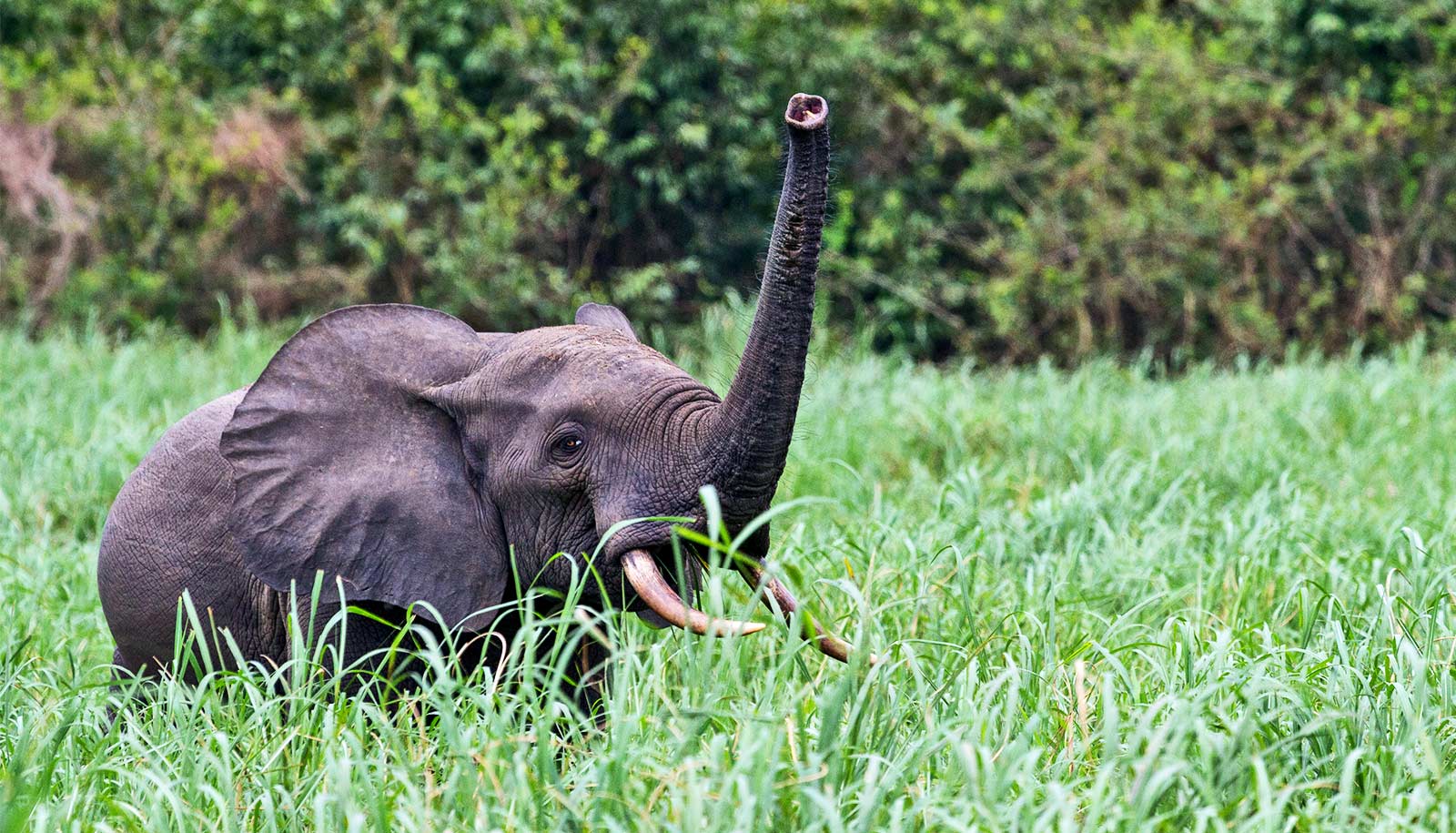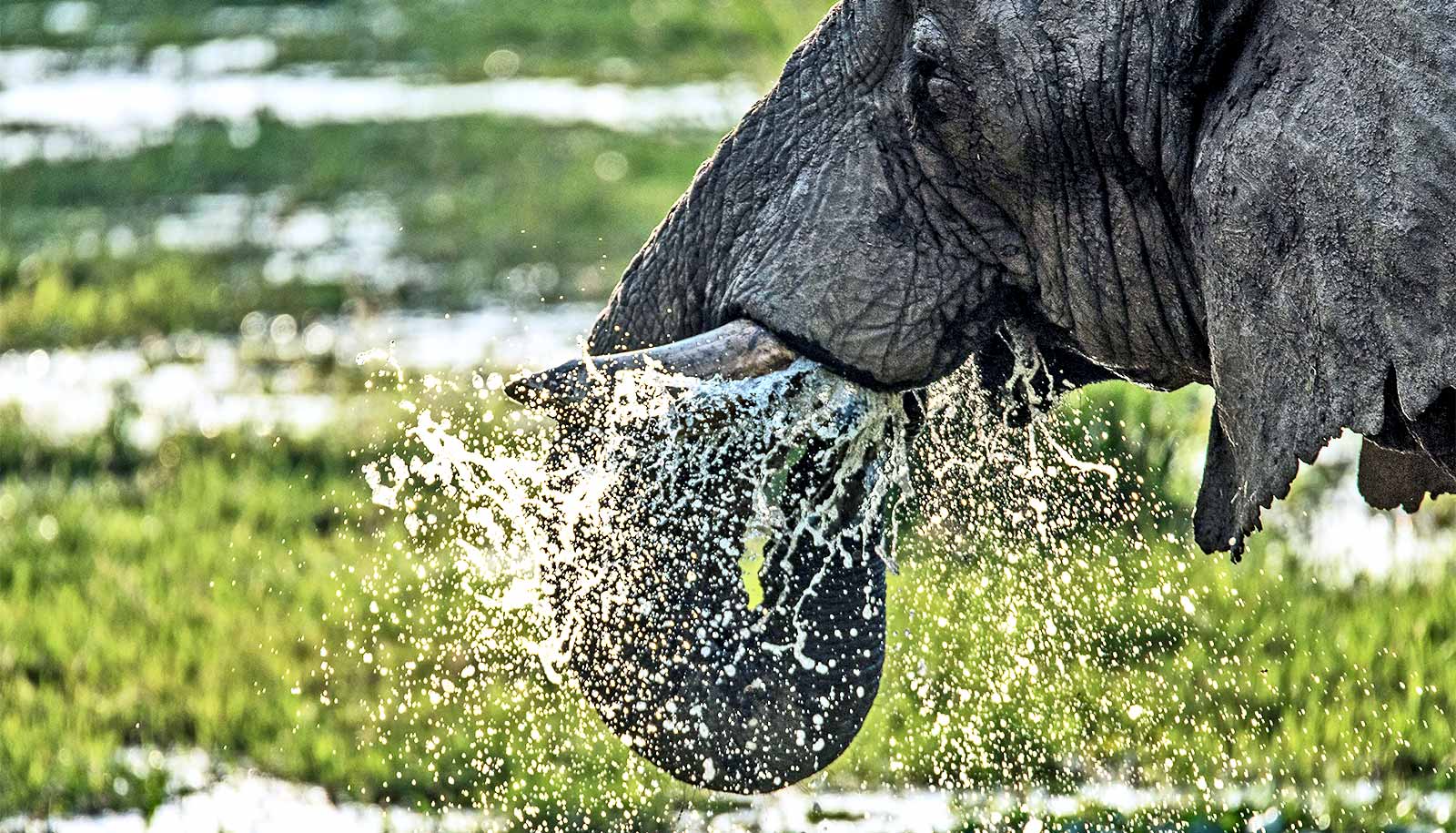Using dried spots of blood from elephants is a viable way to evaluate their health, research suggests.
The findings indicate the technique, which uses dried spots of blood to measure health indicators in elephants, is comparable to techniques that use larger blood samples and require immediate cold storage—technology that isn’t always available when monitoring animals in the wild.
“Our study focused on omega-3 and omega-6 fatty acids, which can be measured in blood and tell us a lot about an animal’s health,” says Jordan Wood, who recently defended her PhD dissertation at North Carolina State University and first author of a paper on the work in the journal PeerJ.
“In elephants, these fatty acids are particularly valuable indicators of cardiovascular and reproductive health.”
Conventional techniques for measuring these fatty acids involve collecting samples of whole blood. The samples can then be tested using the whole blood, or plasma or serum from the blood. However, all of these techniques require researchers to either freeze the blood samples very quickly after they are drawn or immediately process the sample. If frozen, the samples then won’t be thawed until they reach a lab capable of performing the relevant tests.
An alternative is “dry blood spot” sampling, or DBS. This technique requires only a few drops of whole blood, which are dried on specialized filter paper.
DBS samples don’t require immediate freezing, which is a big advantage—particularly for researchers doing field work. DBS samples also take up much less space, since small pieces of paper take up substantially less room than freezer equipment containing vials of frozen blood.
What’s more, DBS also requires drawing much less blood from the animal. This is less stressful for the animal and can be important for the health of smaller animals when the blood amount available for collection is very limited.
However, there have been questions about the accuracy of DBS techniques when it comes to measuring fatty acids, particularly in non-human species.
“We know DBS works well for DNA and protein testing,” Wood says. “But fatty acids are less stable when exposed to air and ambient temperatures, so this was an open question. That’s what we set out to address with this study.”
To that end, the researchers took whole blood, plasma, serum, and DBS samples from six adult African elephants (Loxodonta africana) at the North Carolina Zoo. The researchers then processed each of the samples to see how they compared to each other.
The researchers found that there were very few differences between whole blood and DBS samples, suggesting that elephant researchers can use DBS sampling techniques to assess omega-3 and omega-6 fatty acids—and related animal health parameters—in both wild elephant populations and in managed elephant populations.
“This is also tells us that we can compare data collected using whole blood samples to data collected from DBS samples—it’s comparing apples to apples, not apples to oranges,” Wood says.
What’s more, the study found that fatty acid data from serum and plasma samples was closer to whole blood and DBS samples than the researchers anticipated.
“They are not as close a match as the DBS samples were to whole blood samples, but they were fairly similar,” Wood says. “This is useful, because it means we can make meaningful comparisons using historical data that was collected using plasma and serum samples. That’s particularly important given that much of that historical data is on wild animal populations, helping us better understand how animal health may have shifted over time and under varying conditions.
“We’re hoping this work will enable the research and conservation community to collect more samples from wild populations, since it will be easier, less expensive, and less stressful for the animals. That could help us better understand the health of wild populations and how that compares to the health of managed elephant populations. Ultimately, we think this can help us continue to improve diet and other conditions for managed elephant populations and other species.”
Additional coauthors are from NC State; North Carolina Zoo; and Lipid Technologies, LLC.
Source: NC State


